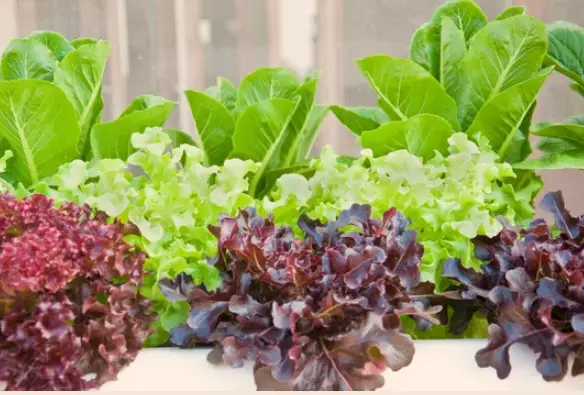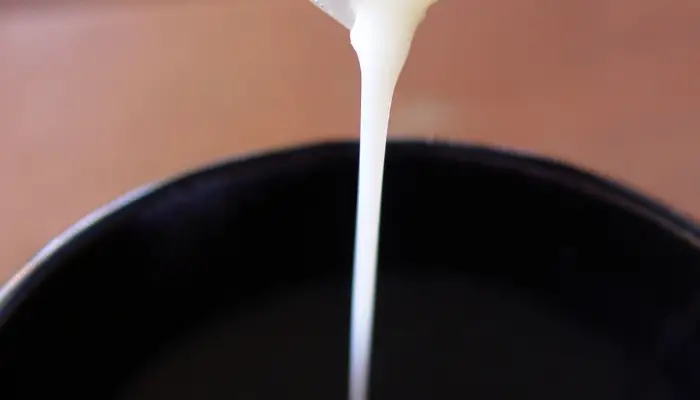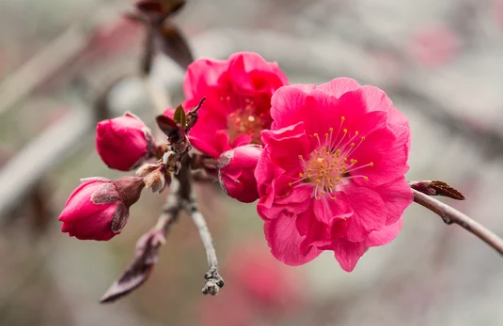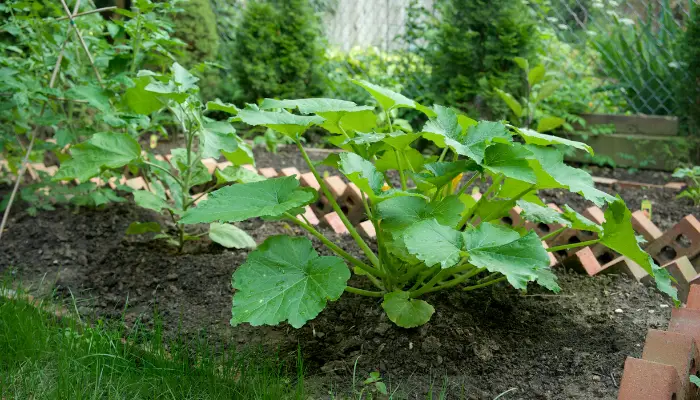What to Grow in a Hydroponic Garden
If you’re interested in growing your own produce but don’t have a lot of outdoor space, hydroponic gardening may be the solution for you. Hydroponic gardening is a method of growing plants without soil, using a nutrient-rich water solution instead. Not only can hydroponic gardening be done indoors, but it also allows for the year-round growing of crops.
One of the benefits of hydroponic gardening is that it can be used to grow a wide variety of plants. From leafy greens like lettuce and spinach to fruiting plants like tomatoes and strawberries, hydroponic gardening offers the opportunity to grow a diverse range of produce. Additionally, because hydroponic gardening is done in a controlled environment, there is less risk of pests and diseases affecting your crops.
When deciding what to grow in your hydroponic garden, it’s important to consider the specific needs of each plant. Some plants, like lettuce and herbs, thrive in hydroponic systems and are relatively easy to grow. Other plants, like fruiting plants, may require more attention and specific growing conditions. By doing your research and selecting the right plants for your hydroponic garden, you can enjoy fresh, homegrown produce all year round.
What is a Hydroponic Gardening?

If you’re new to hydroponic gardening, it’s important to understand the basics before you start growing plants. Hydroponic gardening is a method of growing plants without soil. Instead, plants are grown in a nutrient-rich water solution that provides all the necessary minerals and nutrients for healthy plant growth.
One of the advantages of hydroponic gardening is that it allows you to grow plants in a controlled environment. You can adjust the nutrient solution to meet the specific needs of each plant, which can lead to faster growth and higher yields. Additionally, hydroponic gardening requires less water than traditional gardening methods, making it a more sustainable option.
When it comes to choosing what to grow in your hydroponic garden, the possibilities are endless. Almost any plant can be grown hydroponically, from herbs and vegetables to fruits and flowers. However, some plants are better suited for hydroponic gardening than others.
For example, leafy greens like lettuce and spinach are popular choices for hydroponic gardening because they grow quickly and don’t require a lot of space. Tomatoes, cucumbers, and peppers are also commonly grown hydroponically.
It’s important to choose plants that are well-suited for hydroponic gardening and to research their specific growing requirements. Some plants may require additional support or different nutrient solutions to thrive in a hydroponic environment.
Overall, hydroponic gardening offers a sustainable and efficient way to grow plants. With the right knowledge and equipment, you can grow a wide variety of plants in your hydroponic garden.
Benefits of Hydroponic Gardening

Hydroponic gardening has several benefits over traditional soil-based gardening. Here are a few reasons why you should consider starting your own hydroponic garden:
1. Water Conservation
Hydroponic gardening uses significantly less water than traditional soil-based gardening. In fact, hydroponic systems can use up to 90% less water than soil-based systems. This is because hydroponic systems recycle water and nutrients, so there is no need to constantly water plants or worry about water runoff.
2. Space Efficiency
Hydroponic gardening is incredibly space-efficient. Because plants are grown in nutrient-rich water instead of soil, they can be grown closer together without competing for resources. This means that you can grow more plants in a smaller space, making hydroponic gardening ideal for urban environments or small apartments.
3. Increased Yield
Hydroponic gardening can lead to higher yields than traditional soil-based gardening. This is because plants grown hydroponically receive a constant supply of nutrients and water, which allows them to grow faster and produce more fruit or vegetables.
4. No Soil Required
Hydroponic gardening does not require soil, which means that you can grow plants in areas where soil quality is poor or non-existent. This also means that you don’t need to worry about soil-borne pests or diseases, making hydroponic gardening a great option for organic gardening.
5. Year-Round Gardening
Hydroponic gardening allows you to grow plants year-round, regardless of the weather outside. This means that you can enjoy fresh produce all year long, even in the middle of winter.
Overall, hydroponic gardening is a great option for anyone looking to grow their own produce in a space-efficient, water-efficient, and soil-free environment.
Essential Equipment for Hydroponic Gardening

To start your hydroponic garden, you will need some essential equipment. Here are some items that you should consider getting:
Hydroponic Growing System
The hydroponic growing system is the backbone of your hydroponic garden. It is the system that allows you to grow plants without soil. There are many types of hydroponic growing systems, including the wick system, deep water culture system, ebb and flow system, drip system, nutrient film technology, aeroponic systems, and aquaponic system. Each system has its own advantages and disadvantages, so you should choose the one that best fits your needs.
Hydroponic Growing Medium
Since you won’t be using soil in your hydroponic garden, you will need a growing medium to support your plants. Some popular hydroponic growing mediums include rockwool, coconut coir, perlite, vermiculite, and clay pellets. Each growing medium has its own unique properties, so you should choose the one that best suits your plants.
Nutrient Solution
In hydroponic gardening, you will need to provide your plants with the nutrients they need to grow. You can buy pre-made nutrient solutions or make your own. Nutrient solutions typically contain nitrogen, phosphorus, potassium, calcium, magnesium, and other trace elements.
pH Test Kit
The pH of your nutrient solution is crucial for the health of your plants. You should aim for a pH between 5.5 and 6.5. A pH test kit will help you monitor the pH of your nutrient solution and make any necessary adjustments.
Grow Lights
Since you will be growing plants indoors, you will need grow lights to provide your plants with the light they need for photosynthesis. LED grow lights are a popular choice for hydroponic gardening because they are energy-efficient and produce less heat than other types of grow lights.
Water Pump
A water pump is necessary for circulating the nutrient solution through your hydroponic growing system. Make sure to choose a pump that is the right size for your system.
Air Pump
An air pump is important for providing oxygen to the roots of your plants. This is especially important in deep water culture systems.
Timer
A timer is useful for controlling the lighting and watering cycles in your hydroponic garden. This will help you maintain a consistent schedule for your plants.
By getting these essential pieces of equipment, you will be well on your way to growing a successful hydroponic garden.
Choosing the Right Plants for Hydroponic Gardening
Hydroponic gardening is a great way to grow plants indoors without soil. With hydroponics, you can grow a variety of plants, including leafy greens, herbs, fruits, and flowers. Here are some tips for choosing the right plants for hydroponic gardening.
Leafy Greens
Leafy greens are one of the best plants to grow in hydroponic systems. They grow quickly and are easy to maintain. Some of the best leafy greens for hydroponic gardening include:
- Lettuce
- Spinach
- Kale
- Arugula
- Swiss chard
These plants can be harvested continuously, and they do not require a lot of space to grow. They also do well in nutrient-rich water, which is perfect for hydroponic systems.
Herbs
Herbs are another great option for hydroponic gardening. They are easy to grow and can add flavor to your meals. Some of the best herbs for hydroponic gardening include:
- Basil
- Cilantro
- Mint
- Oregano
- Parsley
These plants grow quickly and can be harvested continuously. They also do not require a lot of space to grow, making them perfect for hydroponic systems.
Fruits
While some fruits can be challenging to grow in hydroponic systems, there are a few that do well. These fruits include:
- Strawberries
- Tomatoes
- Peppers
These plants require a bit more care than leafy greens or herbs, but they can produce a bountiful harvest in the right conditions. They also require more space to grow, so make sure your hydroponic system is large enough to accommodate them.
Flowers
If you want to add a bit of color to your hydroponic garden, flowers are a great option. While they don’t produce edible fruits or vegetables, they can add beauty to your space. Some of the best flowers for hydroponic gardening include:
- Marigolds
- Petunias
- Pansies
- Impatiens
These plants require a bit more care than leafy greens or herbs, but they can add a lot of visual appeal to your hydroponic garden.
In summary, when choosing plants for your hydroponic garden, consider leafy greens, herbs, fruits, and flowers. Choose plants that are easy to maintain and that will thrive in a hydroponic system. With the right plants, you can enjoy a bountiful harvest and a beautiful indoor garden.
Steps to Start Your Hydroponic Garden
Starting your own hydroponic garden can be an exciting and rewarding experience. Here are some steps to help you get started:
- Choose a location: Your hydroponic garden can be set up indoors or outdoors. If you choose to grow indoors, you will need to make sure you have enough space and access to electricity. If you choose to grow outdoors, you will need to make sure you have a location that gets enough sunlight and protection from the elements.
- Choose a hydroponic system: There are many different types of hydroponic systems, including deep water culture, nutrient film technique, and drip irrigation. Each system has its own advantages and disadvantages, so it’s important to choose the one that will work best for your needs.
- Choose your plants: Almost any plant can be grown hydroponically, but some plants are better suited for this type of gardening than others. Some popular hydroponic plants include lettuce, herbs, tomatoes, cucumbers, and peppers.
- Set up your hydroponic system: Once you have chosen your system and plants, it’s time to set up your garden. Follow the instructions carefully and make sure you have all the necessary equipment and supplies.
- Add nutrients: Nutrients are an essential part of hydroponic gardening. You will need to add them to your water regularly to ensure that your plants have everything they need to grow and thrive.
- Monitor your garden: Regular monitoring is important to ensure that your plants are growing properly and that your system is functioning correctly. Check the pH level of your water regularly and adjust it as needed. Keep an eye out for pests and diseases, and take action quickly if you notice any problems.
By following these steps, you can start your own hydroponic garden and enjoy fresh, healthy produce all year round.
Maintaining Your Hydroponic Garden
Maintaining a hydroponic garden is relatively easy compared to traditional soil-based gardening. Here are some tips to keep your hydroponic garden healthy and productive:
Monitor the pH Level
The pH level of your hydroponic garden is critical to the health of your plants. Most plants thrive in a pH range of 5.5 to 6.5. You can use a pH meter or test kit to monitor the pH level of your nutrient solution. If the pH level is too high or too low, adjust it by adding pH up or pH down solution.
Check the Nutrient Solution
Check the nutrient solution in your hydroponic garden regularly. If the nutrient solution becomes too diluted or concentrated, it can affect the growth of your plants. You can use a TDS (total dissolved solids) meter to check the concentration of the nutrient solution. If the TDS is too low, add more nutrient solution. If it’s too high, add more water.
Clean the System
Keeping your hydroponic system clean is important to prevent the growth of algae, bacteria, and other harmful microorganisms. Regularly clean the reservoir, pumps, and other components of your system. You can use a hydrogen peroxide solution or other cleaning products specifically designed for hydroponic systems.
Inspect the Plants
Regularly inspect your plants for signs of pests, diseases, or nutrient deficiencies. If you notice any problems, take immediate action to prevent them from spreading. You can use organic pest control products or other natural remedies to treat pests and diseases.
Maintain the Temperature and Humidity
The temperature and humidity of your hydroponic garden can affect the growth of your plants. Most plants grow well in temperatures between 65 to 80°F (18 to 27°C) and humidity levels between 50 to 70%. You can use a thermometer and hygrometer to monitor the temperature and humidity levels in your grow room or greenhouse.
By following these simple tips, you can maintain a healthy and productive hydroponic garden.
Troubleshooting Common Hydroponic Issues
Hydroponic gardening is a great way to grow plants indoors, but it can come with its own set of challenges. Here are some common issues that you may encounter and how to troubleshoot them:
Nutrient Imbalances
Nutrient imbalances are one of the most common issues in hydroponic gardening. Too much or too little of a certain nutrient can cause stunted growth, yellowing leaves, or even death of the plant. To prevent nutrient imbalances, make sure to follow the recommended nutrient ratios for your specific plant species. You can also test the nutrient levels in your water using a pH and EC meter.
pH Fluctuations
pH fluctuations can also cause problems in hydroponic gardening. If the pH is too high or too low, the plant may not be able to absorb certain nutrients. To prevent pH fluctuations, make sure to regularly test the pH levels in your water and adjust as needed using pH up or pH down solutions.
Root Rot
Root rot is a fungal disease that can occur in hydroponic systems if the roots are constantly submerged in water. To prevent root rot, make sure to provide adequate oxygenation to the roots by using an air pump or air stone. You can also use beneficial bacteria or fungicides to prevent the growth of harmful fungi.
Water Leaks
Water leaks can occur in hydroponic systems due to faulty plumbing or equipment. To prevent water leaks, make sure to regularly inspect your system for any signs of leaks or damage. You can also use waterproof tape or sealant to fix any leaks that you may find.
Temperature Fluctuations
Temperature fluctuations can also affect plant growth in hydroponic systems. If the temperature is too high or too low, the plant may not be able to grow properly. To prevent temperature fluctuations, make sure to use a thermometer to monitor the temperature in your system and adjust as needed using a heater or fan.
By troubleshooting these common issues, you can ensure that your hydroponic garden is healthy and thriving.
Expanding Your Hydroponic Garden
Once you have successfully grown a few plants in your hydroponic garden, you may want to expand your setup and try growing different types of plants. Here are some tips to help you expand your hydroponic garden:
Choose the Right Plants
When selecting new plants to grow in your hydroponic garden, it’s important to consider their growth habits and nutrient requirements. Some plants, like lettuce and herbs, are well-suited for hydroponic gardening because they have relatively small root systems and don’t require a lot of nutrients. Other plants, like tomatoes and cucumbers, have larger root systems and require more nutrients, so you may need to adjust your hydroponic setup to accommodate their needs.
Experiment with Different Hydroponic Systems
There are many different types of hydroponic systems to choose from, each with its own pros and cons. If you’ve been using a simple deep water culture system, you may want to experiment with other systems like nutrient film technique or aeroponics to see how they work for different types of plants.
Build or Buy a Larger Setup
If you’re ready to take your hydroponic gardening to the next level, you may want to consider building or buying a larger setup. This will allow you to grow more plants at once and experiment with different types of hydroponic systems. Just be sure to choose a setup that is appropriate for the types of plants you want to grow.
Keep Learning
Hydroponic gardening is a constantly evolving field, and there is always more to learn. Whether you’re reading books, watching videos, or attending classes, make sure to keep learning and experimenting to get the most out of your hydroponic garden.
Frequently Asked Questions
What are some good plants for beginners in hydroponics?
If you are new to hydroponic gardening, there are many plants that are easy to grow and require minimal maintenance. Some good options include lettuce, spinach, kale, and herbs like basil, parsley, and cilantro. These plants are relatively fast-growing and can provide a good yield with minimal effort.
What are the best vegetables to grow in a hydroponic garden?
Vegetables that grow well in hydroponic gardens include tomatoes, peppers, cucumbers, and beans. These plants require a bit more attention than some of the beginner-friendly options, but they can provide a high yield and are well-suited to hydroponic systems.
What plants do well in hydroponics?
Many plants can be grown successfully in hydroponic systems, including leafy greens, herbs, vegetables, and even fruit trees. Some popular options include lettuce, spinach, kale, basil, parsley, cilantro, tomatoes, peppers, cucumbers, beans, and strawberries.
What is the best hydroponic system for growing vegetables?
The best hydroponic system for growing vegetables will depend on the specific needs of your plants and the space you have available. Some popular options include deep water culture, nutrient film technique, and drip irrigation systems. Consider factors like the size of your plants, the amount of space you have, and your budget when selecting a hydroponic system.
What are some hydroponic plants that can be grown indoors?
Many plants can be grown successfully in indoor hydroponic systems, including herbs, leafy greens, and some vegetables. Some popular options include basil, parsley, cilantro, lettuce, spinach, and kale. These plants can be grown in small hydroponic systems that fit easily on a windowsill or countertop.
Can hydroponics be considered an environmentally friendly method of gardening?
Hydroponics can be considered an environmentally friendly method of gardening when compared to traditional soil-based gardening. Hydroponic systems use less water than soil-based systems and can be grown without the use of harmful pesticides or herbicides. Additionally, hydroponic systems can be used to grow plants in areas where traditional gardening is not possible, such as in urban areas or in regions with poor soil quality.








